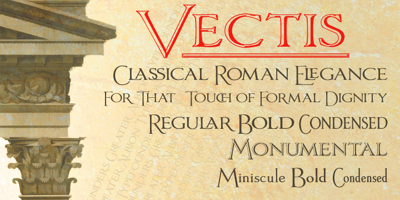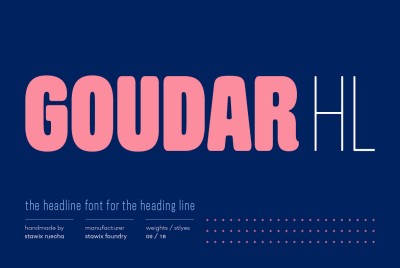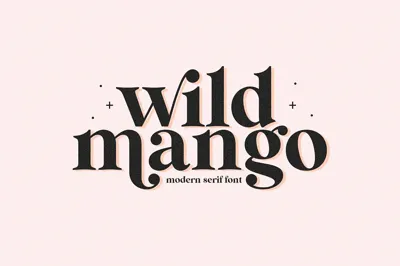Handwritten Fonts vs. AI Typography: What Americans Prefer in 2025
Handwritten Fonts vs. AI Typography: What Americans Prefer in 2025
The typography landscape in 2025 presents a fascinating paradox: while artificial intelligence can now generate flawless letterforms in seconds, American consumers are gravitating toward the intentional imperfections of handwritten fonts. This cultural collision between cutting-edge technology and human authenticity is reshaping how brands communicate, forcing designers to choose between algorithmic precision and handcrafted soul.
The stakes couldn't be higher. In a marketplace where AI-generated content floods every channel, typography has become one of the last bastions of authentic human expression. American consumers, increasingly skeptical of artificial perfection, are rewarding brands that dare to embrace the beautiful imperfections of human handwriting.
The Rise of AI Typography: Perfection at Scale
Artificial intelligence has revolutionized typography creation, offering capabilities that seemed like science fiction just a few years ago. AI-powered tools can now generate custom fonts based on simple text prompts, create infinite variations of existing typefaces, and even optimize letterforms for specific reading conditions or demographic preferences.
The advantages are undeniable: AI typography delivers consistency at scale, perfect kerning, mathematical precision, and infinite customization possibilities. American tech companies have embraced AI-generated fonts for their ability to create brand-specific typography without the time and expense of traditional type design.
Major platforms like Adobe and Google have integrated AI into their font creation workflows, allowing designers to generate custom letterforms that would have taken weeks to create manually. The efficiency gains are substantial – what once required specialized expertise and significant time investment can now be accomplished in minutes.
AI typography excels in functional applications where consistency and legibility are paramount. User interfaces, technical documentation, and data visualization benefit enormously from AI's ability to optimize readability across different contexts and user needs.
However, this perfection comes with a hidden cost: the absence of human quirks, personality, and emotional resonance that make typography truly memorable. As AI-generated fonts become ubiquitous, they risk creating a homogenized visual landscape where everything looks competent but nothing feels distinctive.
The Handwritten Font Renaissance: Embracing Imperfection
Simultaneously, handwritten fonts are experiencing unprecedented popularity among American designers and consumers. These fonts capture the organic flow, natural variations, and delightful inconsistencies that make human handwriting so appealing.
Modern handwritten fonts have evolved far beyond simple script faces. Today's offerings include realistic brush lettering, authentic marker textures, elegant calligraphy, and even deliberately rough pencil sketches. The technology behind handwritten fonts has advanced significantly, with many featuring contextual alternates that prevent letter repetition and ligatures that mimic natural writing flow.
What makes handwritten fonts particularly appealing in 2025 is their ability to convey authenticity in an increasingly artificial world. When consumers encounter handwritten typography, they subconsciously associate it with human care, personal attention, and genuine communication.
American brands across industries are leveraging handwritten fonts to differentiate themselves from competitors relying on generic AI-generated typography. The intentional imperfections – slight weight variations, uneven baselines, and organic curves – signal that a human being was involved in the creative process.
The psychological impact is powerful: handwritten fonts make brands appear more approachable, trustworthy, and personally invested in their customer relationships. In focus groups across major American markets, consumers consistently rate handwritten typography as more authentic and emotionally engaging than AI-generated alternatives.
Consumer Psychology: The Authenticity Premium
American consumer behavior in 2025 reveals a fascinating trend: the "authenticity premium." Research shows that consumers are willing to pay more for products and services that feel genuinely human-made, even when AI alternatives offer superior technical performance.
This preference extends directly to typography choices. A/B testing conducted by major American e-commerce platforms consistently shows higher conversion rates for pages using handwritten fonts in key areas like testimonials, personal messages, and brand storytelling sections.
The generational divide is particularly interesting. While older Americans often prefer the clarity and familiarity of traditional typography, younger consumers actively seek out brands that use handwritten fonts as signals of creativity and authenticity.
Millennials and Gen Z consumers, having grown up with digital perfection, find handwritten imperfections refreshing and genuine. They associate AI-generated typography with corporate coldness and handwritten fonts with small business charm and personal attention.
Trust metrics also favor handwritten typography. Independent studies show that Americans perceive brands using handwritten fonts as more honest, transparent, and customer-focused compared to those relying exclusively on AI-generated or corporate typography.
Industry Applications: Where Each Approach Thrives
The choice between handwritten and AI typography often depends on industry context and communication goals. Financial services and healthcare organizations typically favor AI typography for its clarity, professionalism, and accessibility compliance. The precision and consistency of AI-generated fonts align with these industries' needs for trustworthy, error-free communication.
Conversely, food and beverage brands, creative agencies, and lifestyle companies increasingly embrace handwritten fonts to convey personality and warmth. Craft breweries, artisanal food producers, and boutique fashion brands use handwritten typography to signal their commitment to traditional craftsmanship and personal attention.
E-commerce platforms are finding success with hybrid approaches: AI typography for navigation and product descriptions, handwritten fonts for testimonials and personal messages. This combination maximizes both functionality and emotional connection.
The hospitality industry has particularly embraced handwritten fonts, using them to create welcoming, personal experiences that stand out in an increasingly automated service landscape. Hotels, restaurants, and tourism companies use handwritten typography to suggest local character and genuine hospitality.
Technical Considerations: Implementation Challenges
Both AI and handwritten typography present unique technical challenges for American designers and developers. AI-generated fonts often require careful optimization to avoid file size bloat and ensure consistent rendering across different devices and browsers.
Handwritten fonts face different challenges: maintaining readability at various sizes, ensuring accessibility compliance, and managing the larger file sizes often required for contextual alternates and ligatures. Many handwritten fonts perform poorly at small sizes or in body text applications.
Loading performance becomes crucial when implementing either approach. AI fonts may require API calls or cloud processing, while handwritten fonts with extensive character sets can impact page load times. American consumers' expectations for fast-loading websites make optimization essential regardless of typography choice.
Licensing considerations also differ significantly. AI-generated fonts may involve complex intellectual property questions, while handwritten fonts often come with clearer, more traditional licensing terms.
The Hybrid Future: Best of Both Worlds
Forward-thinking American brands aren't choosing sides in the handwritten vs. AI typography debate – they're finding ways to combine both approaches strategically. This hybrid strategy leverages AI efficiency where appropriate while preserving human authenticity in key brand touchpoints.
Successful implementations use AI typography for functional elements requiring consistency and scalability: user interfaces, data tables, forms, and navigation systems. Meanwhile, handwritten fonts appear in emotional touchpoints: welcome messages, testimonials, personal stories, and brand values communications.
Some innovative companies are even using AI to enhance handwritten fonts, creating tools that generate natural variations while preserving the human character of the original letterforms. This technology promises to combine the scalability of AI with the authenticity of handwritten typography.
Variable handwritten fonts represent another emerging trend, allowing designers to adjust the "roughness" or "formality" of handwritten characters to match different contexts while maintaining the overall human feel.
Cultural Implications: What This Means for American Design
The handwritten vs. AI typography debate reflects broader cultural tensions in American society about technology's role in human expression. The preference for handwritten fonts signals a desire to preserve human creativity and individual expression in an increasingly automated world.
This trend aligns with the broader "artisanal movement" that has transformed everything from coffee to clothing. American consumers are actively seeking products and experiences that showcase human skill and creativity, even when machine alternatives might be more efficient or consistent.
The typography choices brands make in 2025 communicate their values and priorities to increasingly sophisticated American consumers. Choosing handwritten fonts signals commitment to human-centered design and authentic communication. Embracing AI typography suggests focus on efficiency, innovation, and technological advancement.
Making the Right Choice for Your Brand
The decision between handwritten and AI typography shouldn't be ideological – it should be strategic. Consider your audience's expectations, your brand's personality, and your specific communication goals.
If your brand values efficiency, precision, and cutting-edge innovation, AI typography might align better with your message. If authenticity, craftsmanship, and personal connection are central to your brand identity, handwritten fonts could provide competitive advantage.
The most successful American brands in 2025 will be those that thoughtfully combine both approaches, using each where it provides maximum value. The future of typography isn't about choosing between human and artificial – it's about understanding when each approach serves your audience best.
As AI continues advancing and handwritten fonts become more sophisticated, the distinction between them may blur. But for now, the choice remains clear: do you want your brand to feel perfectly efficient or beautifully human? In 2025 America, both approaches have their place.





